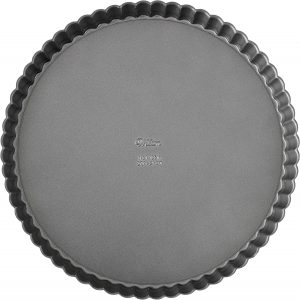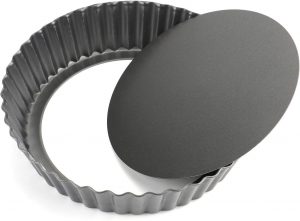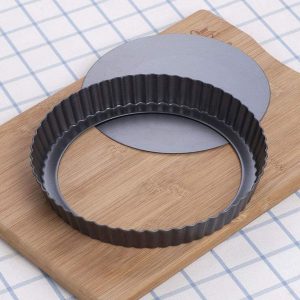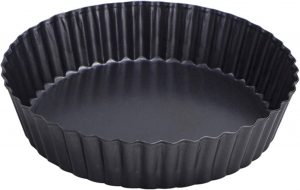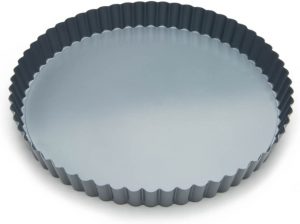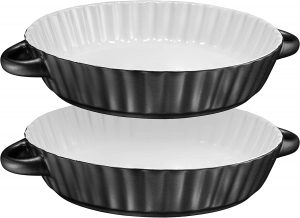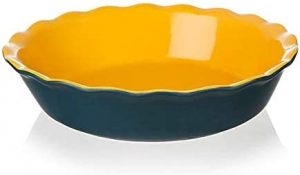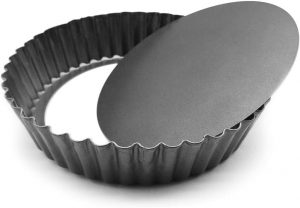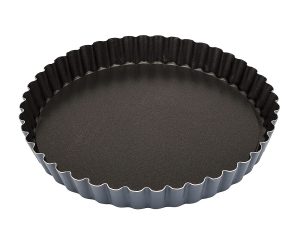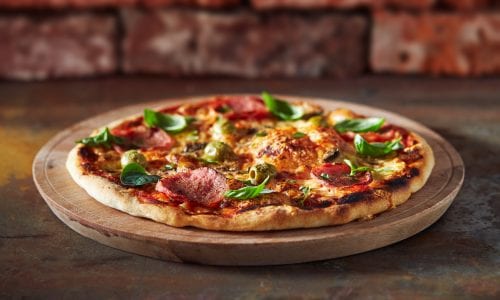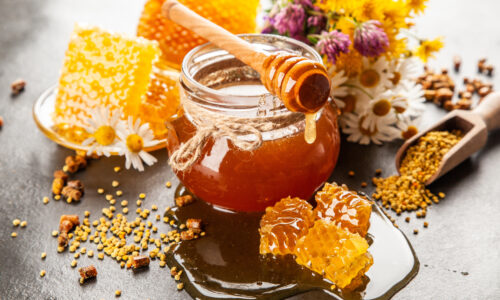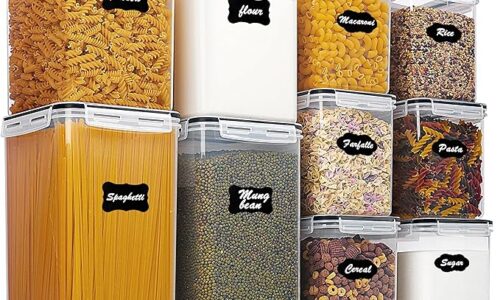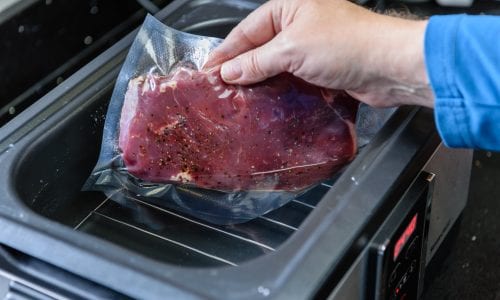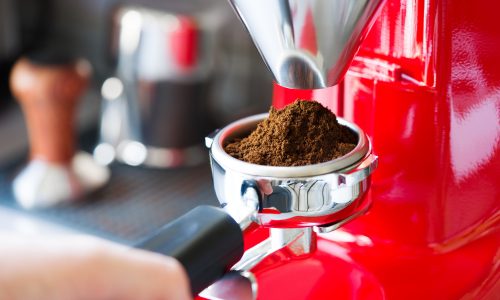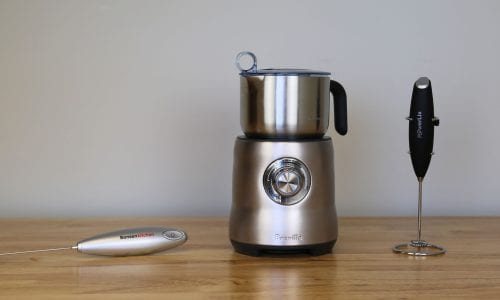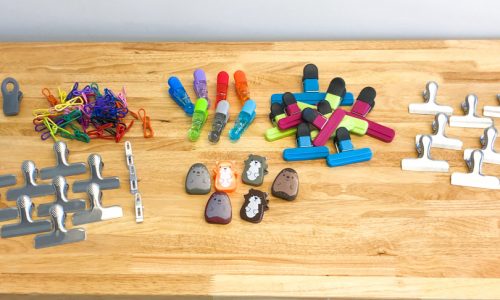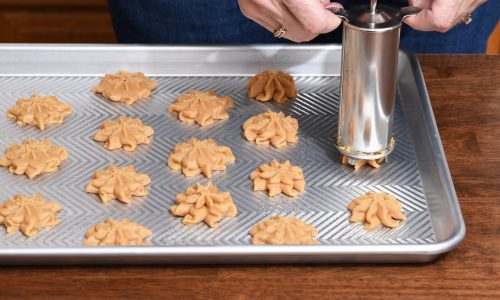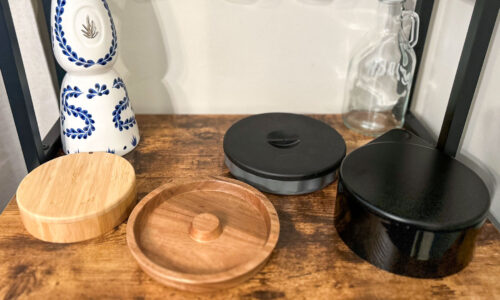The Best Quiche Pan
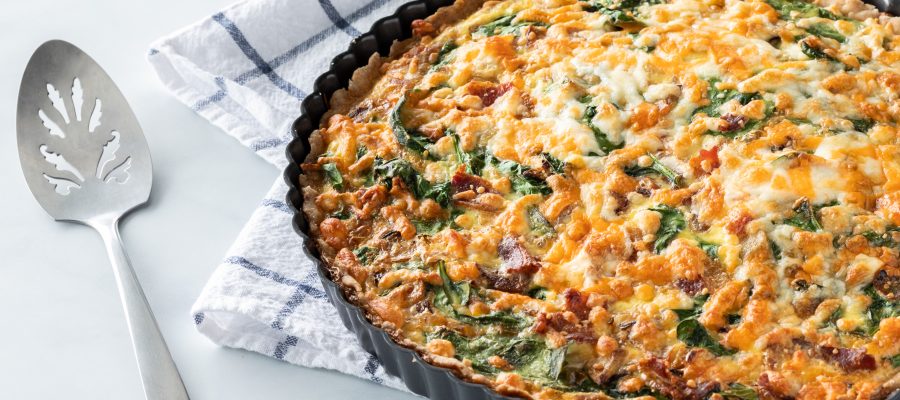
Our Review Process
Don't Waste Your Money is focused on helping you make the best purchasing decision. Our team of experts spends hundreds of hours analyzing, testing, and researching products so you don't have to. Learn more.
Our Picks For The Top Quiche Pans
- 1. Wilton Fluted Edge Non-Stick Quiche Pan
- 2. Tosnail Removable Bottom Non-Stick Quiche Pan
- 3. RICHSC-PAN Dishwasher Safe Non-Stick Quiche Pan
- 4. Webake Carbon Steel Non-Stick Quiche Pan
- 5. Fox Run Dishwasher Safe Removable Bottom Quiche Pan
- 6. Bruntmor Side Handles Ceramic Quiche Pans, 2-Piece
- 7. CHEFMADE PTFE-Free Non-Stick Silicone Coating Quiche Pan
- 8. SWEEJAR Wave Edge Design Ceramic Quiche Pan
- 9. HOMOW Carbon Steel Removable Bottom Quiche Pan
- 10. Matfer Fluted Design Removable Bottom Quiche Pan
This steel quiche pan has a removable bottom to make extracting your food a breeze. The edges are fluted to create professional-looking quiches, and it measures 9” x 1”, making it perfect for standard-sized quiches. The steel design makes it safe for use in the dishwasher, but for best results, wash it in warm, soapy water.
Attention to DetailFluted edges and a removable bottom make this a great all-around quiche pan.
Measuring 9½“ x 8.25” x 2”, this quiche pan has everything you need to make quiches and other baked goods. The durable carbon steel has a nonstick coating to make it easy to extract your items once they’re cooked. The fluted edges and drop-out bottom help you make professional-quality quiches with minimal fuss.
Easy to UseThe drop-out bottom makes it easy to remove your quiche and allow it to cool before serving.
With a temperature tolerance ranging from -104° F to 445° F, this quiche pan is great for making everything from tarts to quiches. You can choose from 9-inch, 3.5-inch and 3-inch versions to suit your needs. It features fluted sides and a removable bottom, along with a nonstick coating that makes cleanup easy.
Versatile UsesA variety of size choices make this a great quiche pan if you’re hoping to shift from tarts to quiches and other delicious foods.
Durable heavy-duty carbon steel ensures this quiche pan will hold up over many uses. It features a premium nonstick coating with a removable bottom and a heat tolerance of up to 446° F. The pan measures 9½“ x 8.2” x 2.2” and features a fluted design.
Unique DesignThe extra-deep design of this quiche pan allows you to make quiches with extra ingredients or deep-dish pies.
Buying Guide
If you want to up your cooking game, quiches can be a great way to do it. They aren’t difficult to make, and with the right ingredients, they make an entire meal for a family.
But to make quiches, you need the right cookware. Many home cooks simply use a pie pan. The best thing about this route is that you can buy disposable versions that you can toss in the trash after you’ve enjoyed your creation. This option is best if you prefer convenience over making a great presentation.
But if you’re truly trying to impress, a cake pan will provide the depth you make delicious quiches. A springform pan, often used for cheesecakes, can be even better. You can remove the sides, too, which makes it easier to serve your quiche.
If you’re really ready to commit to quiche making, though, it might be time to invest in a quiche pan. While other types of pans have sloped edges, quiche pans are designed with straight edges to increase the amount of filling that fits into the crust. They also usually have a fluted design along those edges to give your crust that professional wavy look.
Quiche pans come in a variety of options, but the most popular material for making them is tinned steel. Tinned steel is not dishwasher safe. Most tinned steel quiche pans come in two pieces. When your quiche is finished cooking, you simply push upward on the bottom to slide your quiche out of the pan.
One of the best things about steel is its heat conductivity. Since quiche uses eggs, you’ll want to make sure your dish is cooked thoroughly throughout. The center of a quiche dish needs to reach a temperature of at least 160 degrees unless it has meat and poultry included, at which point it needs to register a temperature of 165.
What to Look For
- Deeper pans can allow for more filling, but keep in mind that it’s tougher to ensure the quiche cooks all the way through with that depth.
- Quiche pans are typically round, but you can find some that are rectangular or square.
- In addition to quiches, you can use your quiche pan to make tarts, pies, pizza and cake, among other food. There are plenty of recipes designed specifically for quiche pans.
- Although round quiche pans typically measure in the 9-inch range, you may prefer smaller, individual quiches. Tartlet pans measure only 4 inches and are great for making these smaller sizes.
- The fluted edges in your quiche pan are for more than decoration. They also provide a crispier crust.
- If you want to take your quiche from the oven to the fridge for cooling, go with a ceramic or porcelain baking dish. That material can better handle temperature changes. With steel, you may find that your quiche develops cracks with extreme temperature shifts.
- There’s another great reason to consider a quiche pan with nonstick coating. Cooking spray and oils can make your quiche crust soggy. Going for a nonstick pan means you won’t have to worry about that.
- Nonstick pans can also create a browner crust than those that don’t have that type of finish. If you prefer your crusts a little crispier, a nonstick pan may be better.
- If you’re short on time, you can substitute a premade pie crust. It’s important to make sure you choose one that isn’t sweetened.
- There are plenty of quiche recipes around. If you’re new to making it, though, give yourself time to experiment and learn what works and doesn’t work. You may not get it right the first few times.
- Pre-baking your crust will give it the structure it needs before you include your filling. Otherwise, the ingredients can soak into the bottom of your crust.
- Don’t overmix the dough. Doing so can make your crust rubbery and keep you from getting that desired light flakiness that makes a quiche so delicious.
More to Explore
Although the word “quiche” didn’t appear in dictionaries until 1805, mixing eggs and cream with pastry dates back as far as the 1300s. In the Medieval era, tarts were even made with pork.
The first instance of quiche, as we know them now, was during Medieval times, as well, originating in Germany. The word quiche comes from the German word kuchen, which means cake. Originally, Quiche Lorraine was made with eggs and cream custard, mixed with smoked bacon. Cheese came along later, and soon, onions were added to make Quiche Alsacienne.
But it wasn’t until the 1950s that quiche became popular in England and the U.S. Initially, quiche was considered a feminine dish, but over the years it became widely accepted as a meal that can be enjoyed any time of day by anyone.

